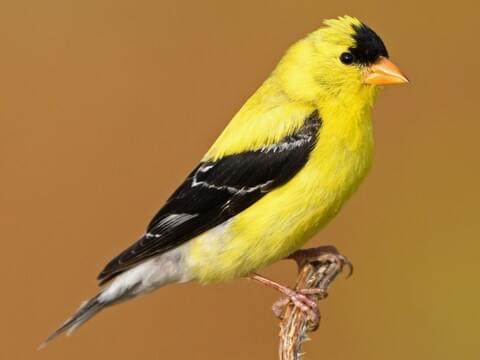
Summer is the perfect season to photograph colorful birds.
Spring and summer are great seasons to go birding! Our migrant species have returned from their wintering grounds attired in their breeding finery, and many species are singing and displaying in fine fashion across the Commonwealth.
While this is list is by no means exhaustive, the birds featured here are some of the most commonly seen species throughout spring and summer all across Massachusetts.
American Goldfinch male in peak breeding plumage © James Jewett
Called sometimes the "wild canary" of the Americas, the American Goldfinch's distinctive sunshine-yellow plumage (feathers) fades in winter to an understated palette of gray, brown, and buff.
These diminutive finches are common visitors to bird feeders across the state, and so the well-prepared birder should be familiar with their varied plumages.
Identification
Regardless of season, several traits about goldfinches remain constant. American Goldfinches are small (5") seed-eating birds with short, pointed, conical bills and wings that are noticeably darker than their bodies.
In spring and summer, the male is canary-yellow with coal black wings, tail, and cap. The female lacks the cap and is colored in more subdued shades of butter yellow and olive.
In winter, the male retains some yellow around the face, throat, and shoulder, but both sexes are primarily grayish-brown. Identify them by their size, shape, and dark wings, which often show one or two clear "wing bars."
American Goldfinch female in winter © USFWS
Behavior
Goldfinches often travel in flocks, and they have a recognizable "bouncing" style of flight, resulting from their tendency to hold their wings tight against their body for a second or two between bouts of flapping.
Particularly during winter, multiple males and females often feed together at a single feeder. American Goldfinches are particularly fond of thistle seed (also called nyjer or nyger).
The song of the American Goldfinch is a variable sweet warble, and the species has a distinctive four-note flight call given as they "bounce"through the air: po-ta-to chip, po-ta-to chip.
Advertisements
05 June 2022
Advertisements



